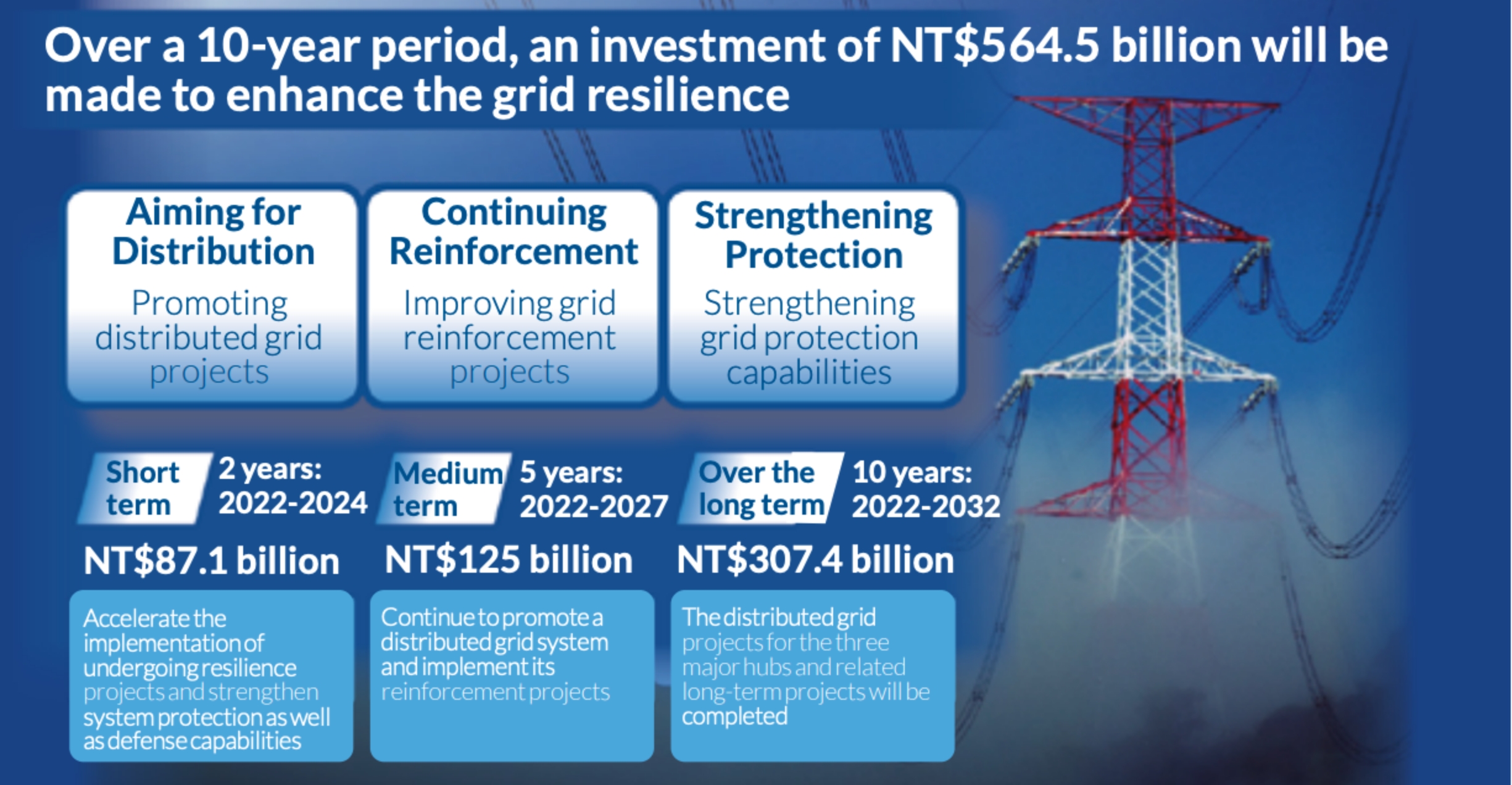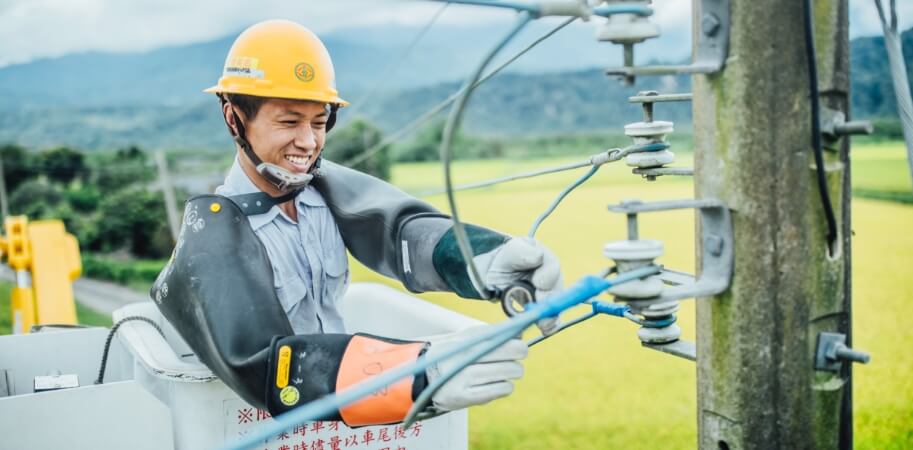Strengthening Power Grid Resilience
To achieve th 2050 net-zero emissions target, Taipower is advancing the Power Grid Resilience Enhancement Program. The program employs a dual-track strategy encompassing both distributed grid and reinforced grid approaches, while also enhancing system defense capabilities to prevent potential risks.The overall plan consists of five key action plans: Distributed Grid Projects, Reinforced Grid Projects, Enhanced System Defense Capabilities, Improved Grid Supply Capacity and Reliability, and Forward-Looking Technology Research and Development. The total investment is approximately NT564.5 billion, of which NT376.1 billion is currently under execution.Taipower enhances grid resilience by implementing distributed grid projects to reduce centralized risks, reinforcing the grid to improve equipment stability, and continually advancing the equipment renewal plan. This involves inventorying equipment vulnerabilities and risks to ensure the stable operation of the transmission and substation system, thereby further strengthening overall grid resilience.

Increase Adaptive Capabilities
To enhance its adaptive capacity, Taipower is establishing effective emergency event policies and guidelines by strengthening disaster response and recovery capabilities, reinforcing substation facilities, and optimizing lightning detection and scientific lightning protection strategies, all while strictly ensuring nuclear safety. These measures not only boost the system’s immediate response and rapid recovery capabilities against natural disasters and unforeseen events but also minimize the impact of disasters on grid operations, thereby ensuring stable power supply and public safety, and enhancing the overall resilience and reliability of the power system.
Ensuring Nuclear Power Safety
Taipower implements the concept of Defense-in-Depth through four lines of defense to ensure nuclear safety in the face of natural and man-made hazards:
01
Prevention
- Design protective mechanisms against natural disasters such as earthquakes, floods, strong winds, and external fires.
- Assess the potential impacts of compound disasters (e.g., earthquakes triggering fires or floods).
02
Mitigation
- Install protective systems and equipment to reduce the impact of accidents and enable rapid responses.
03
Emergency Preparedness
- Ensure sufficient protective measures are in place to safeguard the public in the event of radioactive release.
- Take appropriate actions to minimize radiation exposure.
04
Strategy
- Establish response guidelines for extreme events.
- Strengthen operational procedures and emergency capabilities based on lessons learned from the Fukushima incident.
- Follow emergency operating procedures (EOPs) and severe accident management guidelines (SAMGs) to ensure robust response mechanisms.



